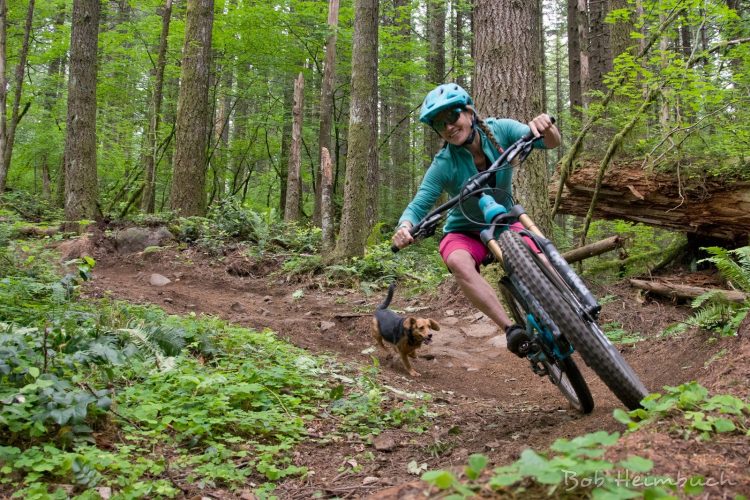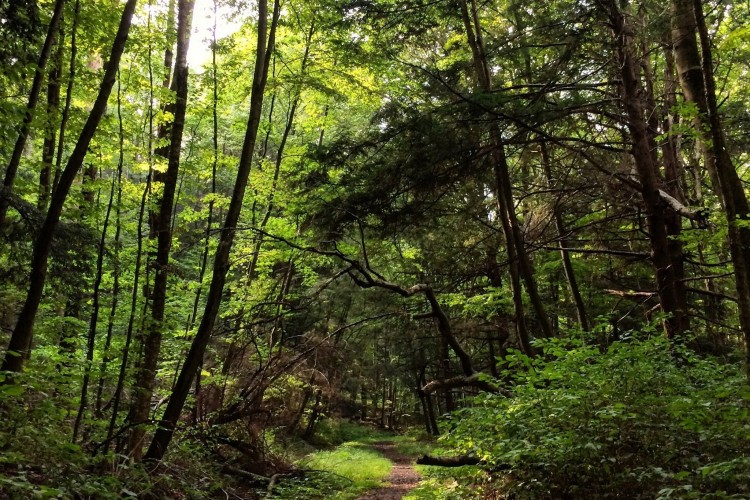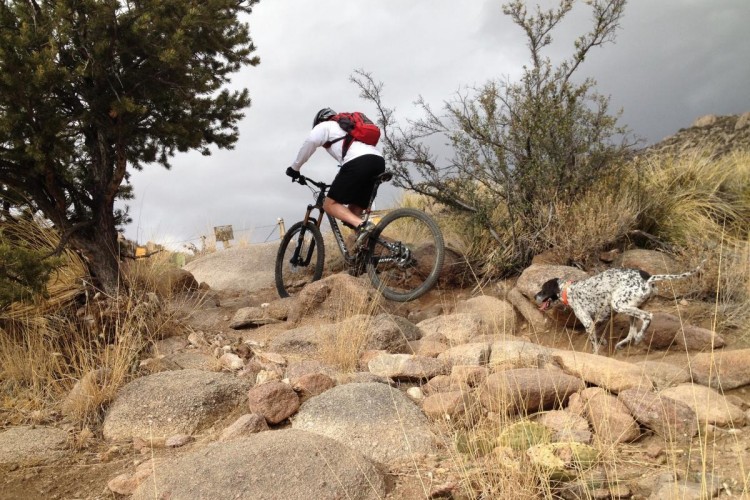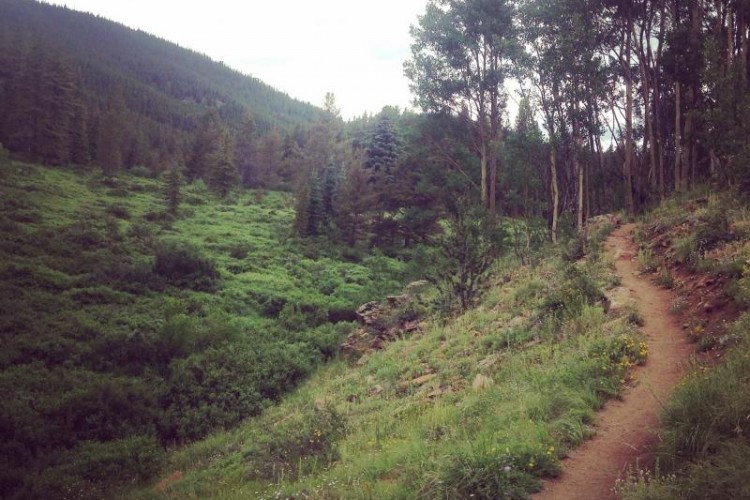
I admit, I was a little scared.
“That fella over there bought you this beer,” the bartender said matter-of-factly.
My friend, Damon, smiled, wrapped his hand around the cold beer, and nodded. I wasn’t sure what was going on. We were in small town Missouri, a place not unlike where I grew up, and we were in bike clothes. Not exactly the right thing for a late-night diner, general store, and karaoke bar where burly patrons were slurring railroad-themed tunes from a makeshift stage.
But our bartender explained that the “fella over there” had bought the beer because he was glad to see folks using the old converted rail bed to ride through town and stop in for some catfish he had caught that day (Damon got the beer because he got the catfish. I got a smile and the firmest of handshakes).
20 years earlier, it was a different story. Adjacent land owners throughout Missouri threatened physical harm – or worse – to any bike rider they saw.
But something magical happened. In the years that followed, they learned what many communities around the country have learned. Bikes don’t just carry colorfully-clad people like you and me into their midst… they also carry opportunity.
Tim Blumenthal, president at People for Bikes, a Boulder, CO-based advocacy group, said it best: “Promoting bicycling doesn’t just help those who ride, it benefits the whole community.”

Damn right. And these days, the mountain bike is leading the charge. Here are six ways that’s true.
1. Mountain bike trails help energize a community
I’m not sure about where you live, but the sweat equity required for the trails in Kansas City came mainly from mountain bikers. Had we not gone to the planning meetings, tramped through the Missouri hardwoods and tied flagging tape everywhere, or put hand to tool when carving those sweet ribbons of dirt, Kansas City would not be the mountain biking place it is.

Thing is, once we had some purpose-built singletrack around town, it brought others out. Runners, hikers, families walking the kids and the dogs, even bird watchers, started wandering around in the woods. And city leaders notice when their constituents are recreating outside because that contributes to quality of life and better health (more on that later).
They also have a pretty keen awareness of who is responsible for the trails. That means they typically credit the trail builders for the changes (that’s you and me). In our case, it also turned a couple of unused areas into places where the community felt safely connected to nature.
Something else surprising happens, according to Michelle Barker, director of chapter and regional development for the International Mountain Bike Association (IMBA).
“[Trails] can quickly become the hub for active people of all backgrounds and bring together those who might not have anything in common but bikes,” she said. “I’ve also seen people become cyclists and mountain bikers because they had trails near their homes, creating a population that cares about healthy outdoor activities.”
Ask David Wright, the director of parks and recreation for Bentonville, Arkansas, and he’ll point out the life- and community-altering power of bike trails.
“There just weren’t a lot of activities adults could participate in,” said Wright. “Nothing from the parks and rec standpoint, anyway. But this is the first thing adults could do in their own town. In fact, people are starting to buy mountain bikes and go out on their own.”
Of course, Bentonville has become a standard by which others are measured. Everything seems connected to paved trails, miles and miles of singletrack, and a town filled with businesses that have flourished because of the bike-centric culture they’ve created there.

Still, go anyplace where there are good mountain bike trails – Fruita, Colorado, for example – and you’ll see active people doing things outdoors where maybe before… not so much. And that turns into a more energized, cohesive community.
2. Trails help funnel money into a community
Again, look at Bentonville. Or places all over the country, for that matter.
[see_also id=”206492″][/see_also]
“Entire towns like Moab, Downieville, Fruita, and Crested Butte, thrive because of mountain biking,” explains Ted Stroll, president of the Sustainable Trails Coalition (STC). “. . .There’s Oakridge, Oregon, which was a dying logging town that [has] been resuscitated by mountain biking. Places one wouldn’t think of, like Medora, North Dakota, benefit from mountain biking on the Maa Daah Hey Trail. There are too many communities to name here. There would be more were it not for bicycle bans along the PCT and in wilderness.”

One of those is Duluth, Minnesota, a town that turned to tourism and, in part, mountain biking, as a way to bring an economic lift to town.
“Duluth was on its way to becoming another rust belt city,” says Waylon Munch, chairman of COGGS, the Cyclists of Gitchee Gummee Shores. “The idea was to invest in tourism and recreation. . .the mountain bike trail development is part of that. Now when I get out on the weekend and talk to people, I’m meeting people from both coasts. The word has gotten out.”
Even my hometown of Kansas City, which has never been a destination, draws modest crowds from around the Midwest who come to ride the trails. What they do is bring dollars earned someplace else and leave them behind. That’s what happening in communities all over. Those trails, that hub of activity, is an economic engine that provides a lift to local businesses.
“In surveys,” said Dave Wiens, executive director of IMBA, “trails are one of the most valuable assets.”

It’s easy to see why. Better health, economic impact and, if your trails are like ours, built at almost no cost to the community.
What’s not to love?
3. Increases the development of small business
What goes better with knobby tires than, say, coffee? Or beer? Well, bike shops, of course, and good places to stuff your face after a ride.
“Great trails are tied closely to a great mountain bike community, and these pieces spill into the community at large by generating continuous needs for food, lodging, and places to spend time off of the bike,” says IMBA’s Michelle Barker. “For example, Red Raven Bike Cafe recently opened in Crosby, Minnesota. This lovely spot is here because of the community that has generated around and because of the trails, comprised of residents and visitors alike.”

You won’t get any argument from Tim Blumenthal. People for Bikes, the organization he heads, spends a lot of time promoting the positive impact that bikes have on society. They’re effectively showing that bikes belong in a well-balanced community and have a positive impact on business.
“The new thing is this idea that retail stores along good bike riding areas actually do better,” Tim says. And, he adds, there is enough to suggest that property values go up when bike infrastructure is in place.
Not to beat a dead tubeless tire, but Dave Wiens, of IMBA, concurs. “This takes an old neighborhood and improves it. First a bike shop, then eateries, then coffee shops, these are the seeds of development.”
Who knew the economic engine of small business was driven, in part, by a pair of scar-covered legs?

4. Communities with trails are more attractive to businesses
Businesses exists to make money. Period.
The smart ones understand that when they are located in a community that has a high quality of life, they have happier employees. And if they have employees who are exercising, they have healthier employees.
Those are key ingredients in the magic sauce that make companies more successful. And it’s simple, really. Happy, healthy employees are more productive, stick with their jobs longer, and take less time off for illnesses. They also cost less in the long run.
Again, Bentonville is a leading example.
David Wright, in Bentonville, says Walmart requires their suppliers to have offices in the company’s hometown. The question they asked themselves was this: what would it take for folks from other parts of the country to want to live in Bentonville?

“They’ll come here kicking and screaming,” David admits. “After they get here, though, they don’t want to go back. They say ‘I’m going to live right here in this town.’”
David attributes that in large part to the quality of life in Bentonville, which happens to be related to the trails. “This has changed our culture,” he says.
Happy people, happy companies. It’s a thing.
5. More robust community involvement in the natural landscape
Out of sight, out of mind, right?
It’s true. So when trails get built into wilderness – even a strip of woods in the city – a strange thing happens. People go onto those trails. And then another thing happens: they fall in love with those places, too.
“It creates a broad constituency of younger and middle-aged people who want to see public lands conserved and well-maintained, says Ted Stroll, of STC. “If people don’t visit public lands, the constituency for them fades.”

Next thing you know a broad coalition of people are out there helping pick up trash, volunteering for river clean up days, planting flowers, removing invasive species and, just maybe, eventually helping build trails.
This starts simply enough, according to Dave Wiens. Mountain bikers, he suggests, see value in land that many others do not. Then, because of our strong streak of volunteerism and desire to roll up our sleeves and get things done (and self-interest, naturally), we get to work. “Not a lot of activities will create that kind of energy,” he says.
Once the trail work is done, sit back and watch what happens. If you build it, to quote the famous movie line, they will come. That results in more protection of the natural areas around a community while also boosting civic pride. Another thing city leaders love.
6. Healthier people
I put this one last because, well, you know this already.
But it’s worth noting that, at 53, I am getting to be fairly unique in my age bracket, as are my riding buddies, most of whom hover around the same general stage in life.
Thing is, we live without pills or illnesses or the maladies that afflict so many others our age and, sadly, even 20 years younger.

A recent visit to some college friends proved that riding the bike could keep me from the long hard slide toward hobbling around with a container full of pills to take. Turns out that the broken toes, fingers, ribs, knee cap and collarbone were actually my down payment on a healthier me. And it’s a small price to pay.
My anecdote is instructive, of course, but Jennifer Herbold, Singletracks contributor and exercise physiologist, provides some detailed information on the impact mountain biking can have on each of us.
“Any healthy sedentary person that takes up mountain biking will reap a plethora of benefits, and the longer they stick with it, the more they’ll get out of it,” she says.
Jenny adds that the number one killer in the US is cardiovascular disease for both men and women. “The best (and most simple) way to prevent its onset is through regular physical activity. To go even further, if you already have atherosclerosis, exercise is also the best way to improve your health. According to several papers published in the American Heart Association’s journal, Circulation, it’s even better than getting a stent (don’t remind the pharmaceutical companies!) Reason enough to keep turning the cranks.”
[see_also id=”203940″][/see_also]
In addition, Jenny, adds, “exercise increases the body’s ability to neutralize free radicals, one of the major causes of aging and age-related diseases, such as cancer, diabetes, and heart disease.”
Finally, think about the amazing mood lifting qualities of bike riding and nature. “Mountain biking is a beautiful combination of these two,” says Jenny, “assisting in stress reduction, increasing outdoor appreciation, and enhancing a sense of community and oneness with the earth. It doesn’t get much better than that!”
[see_also id=”186159″][/see_also]
Beyond the health benefits, riding a bike through the woods just might make you a better person. “Individuals that take the time to become proficient on a mountain bike, well, that makes them better at everything they do,” says IMBA’s Dave Wiens. “They become a better friend, a better parent, a better worker, all because they are so passionate about so many things in their lives.”
So much winning!
It’s easy to forget what we’ve got as mountain bikers – and cyclists in general – when we see stories about people sabotaging trails. That sort of thing is infuriating as well as dangerous. And when trail closures happen, it’s certainly normal to be angry that something we love is under attack by someone who doesn’t get it. And, fighting back is the best response.
Just remember, though, that our chosen passion does a lot to reach well beyond what it does for us individually. It makes communities better, people stronger, businesses thrive, and brings us all closer together.

Sooner or later smart people will realize that… even if it takes them longer than we’d like.
“It’s not about us or about what a community can do for bike riding,” concludes Tim Blumenthal, “but what bike riding and bike riders can do for the community.”



















